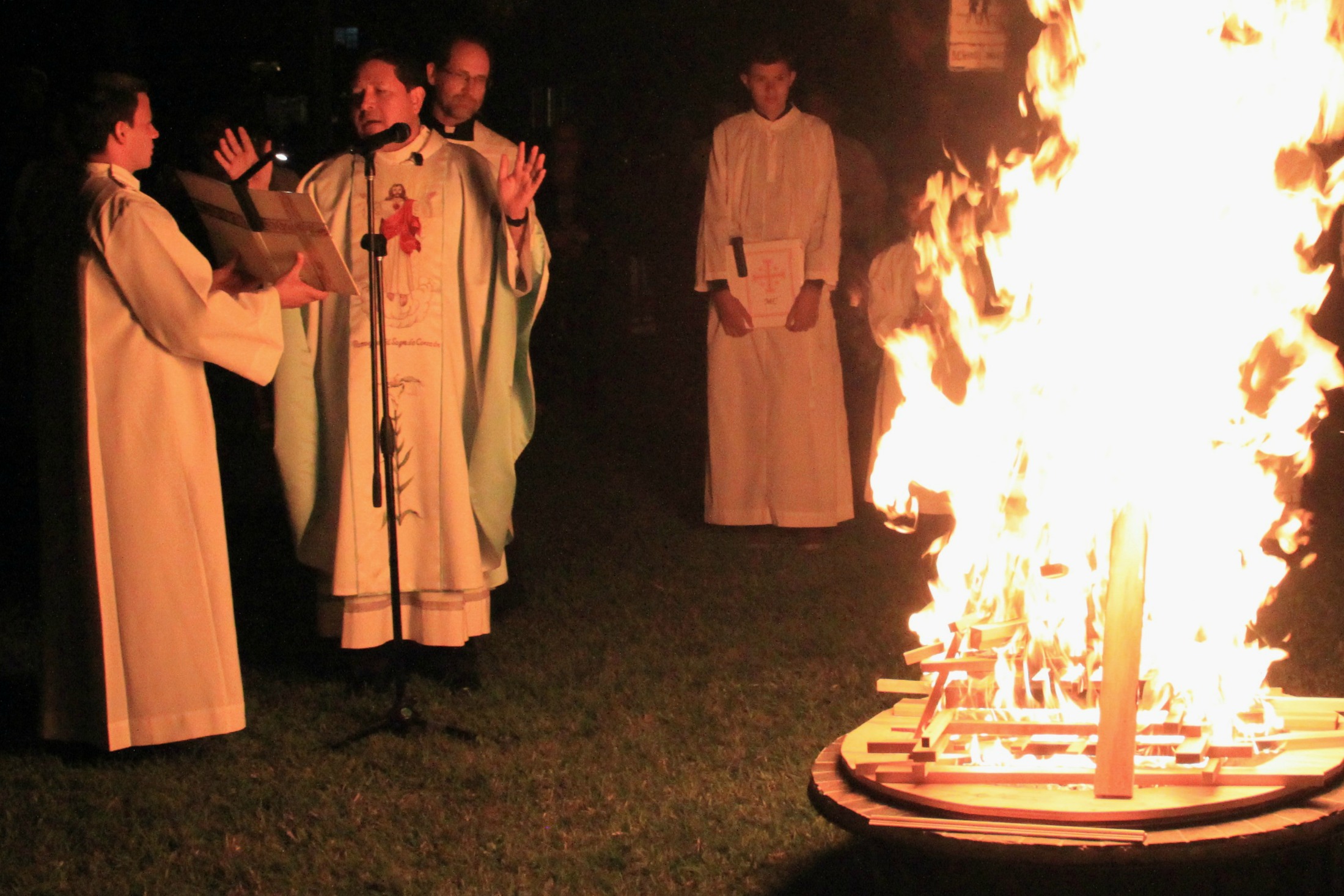The Easter fire has been lit. We stand at the edge of something which is beyond our control. Its warmth and light make all the difference in our lives and in our world. As preachers, we are invited to give voice to the Church’s faith, and the cornerstone of that faith, now and for all time, is the affirmation that Jesus Christ, put to death cruelly and unjustly, nonetheless lives and walks among us. It is the central claim of Christian faith, so important that St. Paul could say, “If Christ has not been raised, then empty is our preaching; empty, too, your faith” (1 Cor 15:14).
Yet the Easter season tends to get short shrift in our preaching and catechesis. One survey showed that 25% of churchgoing people could not even explain what Easter means. Perhaps a letdown after all we put into Lent is inevitable. But the Resurrection of Christ is so crucial, so full of possibility and power for us, that it deserves our best preaching efforts. Easter’s tremendous, earth-shattering importance infuses the scriptural texts of this season, especially the Resurrection accounts and the Acts of the Apostles. It is underlined in the bookend feasts of this season, Easter and Pentecost—the Risen Christ and the Holy Spirit are distinct but inseparable. The readings proclaim that the eschatological age has dawned, the age of the Spirit. Our preaching, too, should be filled with urgency to open our eyes to the presence of the Risen One.
Some tones and themes to keep in mind as we preach during this season:
1. Witness, or testimony
The Resurrection accounts come to us in the form of witness or testimony to this fact: he is alive! They are filled with a sense of wonder and surprise, a sense of the unexpected nature of this event, thus entering the depths of despair and the agony of apparent defeat that followed on Jesus’ death. But these accounts also reach out to us with the implied message: “You too can be witnesses! You too can experience him with us now!”
Why should anyone believe the absurd claim that somebody came back from the dead? Can we say we’ve seen him? One Easter Vigil I gave a homily that went this way: “I believe Christ rose and is still with us because . . .” and then gave a series of stories, mostly, about people who had been rescued from the power of death, whether physical or moral or psychological or spiritual—people whose lives have been touched, changed, transformed in ways they could not do for themselves. I don’t know if this was good preaching, but it was an attempt to testify to something which cannot be strictly, empirically proven but which we believe to be deeply true. If we cannot “give a reason for our hope” (1 Pet 3:15), then our faith rests on nothing living. Our people need to hear us preachers as witnesses to the Easter event.
2. Mystagogy
We savor the mysteries we celebrated, the mysteries we enacted, in the Three Days, including the Baptism of new members who honor us by joining our ranks. Easter preaching reflects on these celebrations, unpacks their meaning, points to what is happening among us. Some of the best preaching illustrations are drawn from the liturgies themselves. Mystagogical preaching opens our eyes to see the deeper dimensions of our celebrations and what they mean for us
3. Joy
Easter faith is a powerful light cast upon our lives and our world, and a powerful antidote to despair. In an anxiety-ridden world, we must lead people to the joy that is our birthright as baptized Christians, a joy that sustains us in the crosses of life, amid sufferings and darkness. Christians celebrate, even in the midst of death, even in the teeth of oppression. Christ has triumphed over death! Preach joy, amazement, wonder this Easter. Anything is now possible
4. Mysticism
The good news of Easter, the good news of the Spirit’s being unleashed among us, is that God’s nearness can be experienced, depended upon, and shared. Vatican II clarified that the mystical path of the experience of the divine is not a special grace for the chosen few, but one offered to all. Our people are hungering for authentic spiritual experience, for real encounter with God. Christ walks among us today as surely as he did 2000 years ago, if we have eyes to see. The Easter texts themselves raise as many questions as they answer; they invite deep reflection and contemplative prayer.
5. Practicality
Ironically, our most mystical season is also our most practical. The Spirit of the Risen Christ comes to our aid in the challenges of daily life, the decisions we face, the confusions of the moment, the work of caring for and protecting our families, our congregations, and the earth itself. We dare to speak concretely of a Spirit always available for our good—think of the gifts of the Spirit: wisdom, understanding, counsel, knowledge, fortitude, piety, and fear of the Lord (wonder or awe)—practical gifts indeed, sorely needed for everyday living. The Spirit comes to guide and protect, to inspire generosity and selflessness, and most of all, to bring us into contact with the “mind of Christ,” the divine life force.
6. Reconciliation
We think of this as a Lenten theme, understandably. But the Easter accounts all make clear that the first disciples experienced in the Lord’s appearance a burst of unexpected mercy. Burdened as they were by their having deserted him in his hour of travail, his return assured them that there is nothing, no sin nor failure that cannot be forgiven. He comes with his wounds to heal our wounded humanity. Our special Jubilee Year of Mercy peaks in the Easter season.
7. Mission
Yes, there is work to do. But it is not a burden; rather, it is a privilege extended to us to be part of Christ’s own mission. We are not compelled but impelled by the Good News that has come to us and touched us in our need and unworthiness. Unselfish, sacrificial love has taken up residence within us, and so we willingly serve others, especially the little ones, the lowly and the least. We become his servants, we continue his mission, by serving the needs of others. And, as we do, we discover the Risen Christ himself in the needy, as Matthew 25:31–46 promises.
Invite your hearers to meet a Living Christ this Easter!
Meditate on Marty Haugen’s beautiful “Song at the Empty Tomb.”
No more the sureness of death. . . .
Life that is new with each breath. . . .
You who open tombs in my soul. . . .
You tear and rend and make whole. . . .
![]()
Featured Photo: Prayitno Hadinata; CC BY 2.0.



